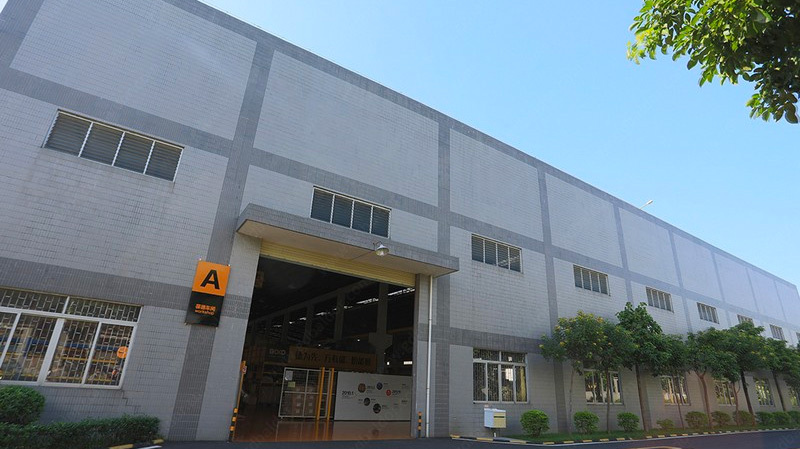A: It is intermixing of comparable atomic orbitals to produce identical hybrid orbitals . So, once again, our goal is orbital. Recall from your study of VSEPR theory in General Chemistry that the lone pair, with its slightly greater repulsive effect, pushes the three N-H s bonds away from the top of the pyramid, meaning that the H-N-H bond angles are slightly less than tetrahedral, at 107.3 rather than 109.5. . Molecular Structure Calculations - Colby College e) Fe(OH)3 5. So, one, two, three sigma Get unlimited access to over 88,000 lessons. 0000001793 00000 n
the carbon and the oxygen, so one of those is a sigma bond, and one of those is a pi bond, So three plus zero gives me Therefore, place carbon in the center and hydrogen and nitrogen on either side. Here, we have a total of 6 electron pairs. Words in Context - Tone Based: Study.com SAT® Reading Line Reference: Study.com SAT® Reading Exam Prep. a. In an sp-hybridized carbon, the 2 s orbital combines with the . But no need to mark on hydrogen, because each hydrogen has already two electrons. They are made from leftover "p" orbitals. 0000010288 00000 n
number is useful here, so let's go ahead and calculate the steric number of this oxygen. b) PbCrO4 2. The carbon-carbon bond, with a bond length of 1.54 , is formed by overlap of one sp3 orbital from each of the carbons, while the six carbon-hydrogen bonds are formed from overlaps between the remaining sp3 orbitals on the two carbons and the 1s orbitals of hydrogen atoms. Valence bond theory Each carbon atom still has two half-filled 2py and 2pz orbitals, which are perpendicular both to each other and to the line formed by the sigma bonds. Direct link to Agrim Arsh's post What is the name of the m, Posted 2 years ago. Techiescientist is a Science Blog for students, parents, and teachers. 0000008014 00000 n
our goal is to find the hybridization state, so identify the hybridization states, and predict the geometetries for all the atoms in this molecule, except for hydrogen, and so, let's start with this carbon, right here. With nitrogen, however, there are five rather than four valence electrons to account for, meaning that three of the four hybrid orbitals are half-filled and available for bonding, while the fourth is fully occupied by a (non-bonding) pair of electrons. A bonding orbital for C1-N2 with 1.9997 electrons __has 41.31% C 1 character in a p-pi orbital ( 99.72% p 0.28% d) { "1.01:_The_Periodic_Table" : "property get [Map MindTouch.Deki.Logic.ExtensionProcessorQueryProvider+<>c__DisplayClass228_0.b__1]()", "1.02:_Bonding" : "property get [Map MindTouch.Deki.Logic.ExtensionProcessorQueryProvider+<>c__DisplayClass228_0.b__1]()", "1.03:_Lewis_Structures" : "property get [Map MindTouch.Deki.Logic.ExtensionProcessorQueryProvider+<>c__DisplayClass228_0.b__1]()", "1.04:_Lewis_Structures_Continued" : "property get [Map MindTouch.Deki.Logic.ExtensionProcessorQueryProvider+<>c__DisplayClass228_0.b__1]()", "1.05:_Resonance" : "property get [Map MindTouch.Deki.Logic.ExtensionProcessorQueryProvider+<>c__DisplayClass228_0.b__1]()", "1.06:_Determining_Molecular_Shape" : "property get [Map MindTouch.Deki.Logic.ExtensionProcessorQueryProvider+<>c__DisplayClass228_0.b__1]()", "1.07:_Drawing_Organic_Structures" : "property get [Map MindTouch.Deki.Logic.ExtensionProcessorQueryProvider+<>c__DisplayClass228_0.b__1]()", "1.08:_Hybridization" : "property get [Map MindTouch.Deki.Logic.ExtensionProcessorQueryProvider+<>c__DisplayClass228_0.b__1]()", "1.09:_Hybridization_Examples" : "property get [Map MindTouch.Deki.Logic.ExtensionProcessorQueryProvider+<>c__DisplayClass228_0.b__1]()", "1.10_Bond_Length_and_Bond_Strength" : "property get [Map MindTouch.Deki.Logic.ExtensionProcessorQueryProvider+<>c__DisplayClass228_0.b__1]()", "1.11:_Electronegativity_and_Bond_Polarity" : "property get [Map MindTouch.Deki.Logic.ExtensionProcessorQueryProvider+<>c__DisplayClass228_0.b__1]()", "1.12:_Polarity_of_Molecules" : "property get [Map MindTouch.Deki.Logic.ExtensionProcessorQueryProvider+<>c__DisplayClass228_0.b__1]()" }, { "00:_Front_Matter" : "property get [Map MindTouch.Deki.Logic.ExtensionProcessorQueryProvider+<>c__DisplayClass228_0.b__1]()", "Chapter_01:_Structure_and_Bonding" : "property get [Map MindTouch.Deki.Logic.ExtensionProcessorQueryProvider+<>c__DisplayClass228_0.b__1]()", "Chapter_02:_Acids_and_Bases" : "property get [Map MindTouch.Deki.Logic.ExtensionProcessorQueryProvider+<>c__DisplayClass228_0.b__1]()", "Chapter_02:_Introduction_to_Organic_Molecules_and_Functional_Groups" : "property get [Map MindTouch.Deki.Logic.ExtensionProcessorQueryProvider+<>c__DisplayClass228_0.b__1]()", "Chapter_04:_Alkanes" : "property get [Map MindTouch.Deki.Logic.ExtensionProcessorQueryProvider+<>c__DisplayClass228_0.b__1]()", "Chapter_05:_Stereochemistry" : "property get [Map MindTouch.Deki.Logic.ExtensionProcessorQueryProvider+<>c__DisplayClass228_0.b__1]()", "Chapter_06:_Understanding_Organic_Reactions" : "property get [Map MindTouch.Deki.Logic.ExtensionProcessorQueryProvider+<>c__DisplayClass228_0.b__1]()", "Chapter_07:_Alkyl_Halides_and_Nucleophilic_Substitution" : "property get [Map MindTouch.Deki.Logic.ExtensionProcessorQueryProvider+<>c__DisplayClass228_0.b__1]()", "Chapter_08:_Alkyl_Halides_and_Elimination_Reactions" : "property get [Map MindTouch.Deki.Logic.ExtensionProcessorQueryProvider+<>c__DisplayClass228_0.b__1]()", "Chapter_09:_Alcohols_Ethers_and_Epoxides" : "property get [Map MindTouch.Deki.Logic.ExtensionProcessorQueryProvider+<>c__DisplayClass228_0.b__1]()", "Chapter_10:_Alkenes" : "property get [Map MindTouch.Deki.Logic.ExtensionProcessorQueryProvider+<>c__DisplayClass228_0.b__1]()", "Chapter_11:_Alkynes" : "property get [Map MindTouch.Deki.Logic.ExtensionProcessorQueryProvider+<>c__DisplayClass228_0.b__1]()", "Chapter_12:_Oxidation_and_Reduction" : "property get [Map MindTouch.Deki.Logic.ExtensionProcessorQueryProvider+<>c__DisplayClass228_0.b__1]()", "Chapter_13:_Benzene_and_Aromatic_Compounds" : "property get [Map MindTouch.Deki.Logic.ExtensionProcessorQueryProvider+<>c__DisplayClass228_0.b__1]()", "Chapter_20:_Introduction_to_Carbonyl_Chemistry_Organometallic_Reagents_Oxidation_and_Reduction" : "property get [Map MindTouch.Deki.Logic.ExtensionProcessorQueryProvider+<>c__DisplayClass228_0.b__1]()", "Chapter_21:_Aldehydes_and_KetonesNucleophilic_Addition" : "property get [Map MindTouch.Deki.Logic.ExtensionProcessorQueryProvider+<>c__DisplayClass228_0.b__1]()", "zz:_Back_Matter" : "property get [Map MindTouch.Deki.Logic.ExtensionProcessorQueryProvider+<>c__DisplayClass228_0.b__1]()" }, [ "article:topic", "showtoc:no", "license:ccbyncsa", "authorname:lmorsch", "licenseversion:40" ], https://chem.libretexts.org/@app/auth/3/login?returnto=https%3A%2F%2Fchem.libretexts.org%2FCourses%2FUniversity_of_Illinois_Springfield%2FUIS%253A_CHE_267_-_Organic_Chemistry_I_(Morsch)%2FChapters%2FChapter_01%253A_Structure_and_Bonding%2F1.09%253A_Hybridization_Examples, \( \newcommand{\vecs}[1]{\overset { \scriptstyle \rightharpoonup} {\mathbf{#1}}}\) \( \newcommand{\vecd}[1]{\overset{-\!-\!\rightharpoonup}{\vphantom{a}\smash{#1}}} \)\(\newcommand{\id}{\mathrm{id}}\) \( \newcommand{\Span}{\mathrm{span}}\) \( \newcommand{\kernel}{\mathrm{null}\,}\) \( \newcommand{\range}{\mathrm{range}\,}\) \( \newcommand{\RealPart}{\mathrm{Re}}\) \( \newcommand{\ImaginaryPart}{\mathrm{Im}}\) \( \newcommand{\Argument}{\mathrm{Arg}}\) \( \newcommand{\norm}[1]{\| #1 \|}\) \( \newcommand{\inner}[2]{\langle #1, #2 \rangle}\) \( \newcommand{\Span}{\mathrm{span}}\) \(\newcommand{\id}{\mathrm{id}}\) \( \newcommand{\Span}{\mathrm{span}}\) \( \newcommand{\kernel}{\mathrm{null}\,}\) \( \newcommand{\range}{\mathrm{range}\,}\) \( \newcommand{\RealPart}{\mathrm{Re}}\) \( \newcommand{\ImaginaryPart}{\mathrm{Im}}\) \( \newcommand{\Argument}{\mathrm{Arg}}\) \( \newcommand{\norm}[1]{\| #1 \|}\) \( \newcommand{\inner}[2]{\langle #1, #2 \rangle}\) \( \newcommand{\Span}{\mathrm{span}}\)\(\newcommand{\AA}{\unicode[.8,0]{x212B}}\), The diagram below shows the bond lengths and hydrogen-carbon-carbon bond angles of.
Who Was The First Protestant To Play For Celtic,
Articles C
 what secret did landry's mother tell the pope
what secret did landry's mother tell the pope
 when do angela and hodgins get back together
when do angela and hodgins get back together
 kentucky bourbon festival tickets
kentucky bourbon festival tickets